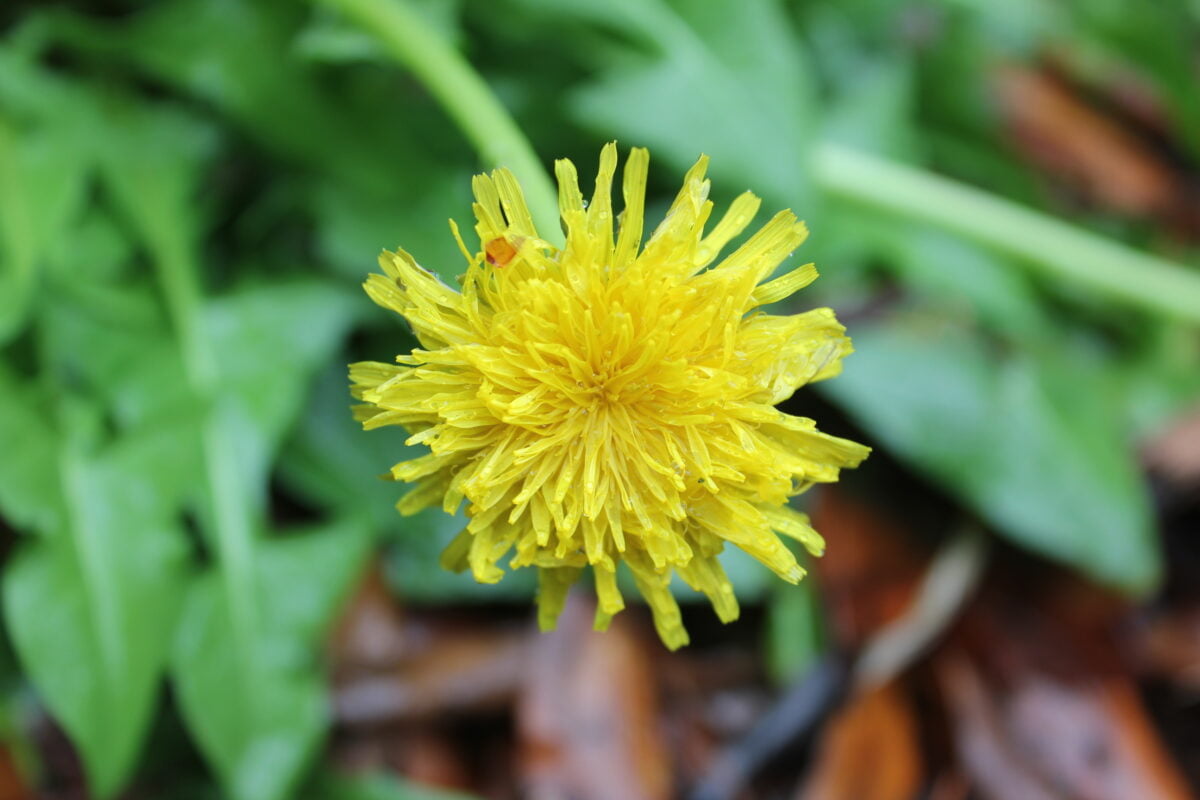Scientific name: Taraxacum officinale
Other common names: blowball, lion’s tooth, butter flower, Irish daisy, fairy clock, Chiang Nou Ts’Ao, Chin Tsan Ts’Ao, Diente De Leon, Huang Hua Ti Ting, Kara Hindiba, Khas Berri, Kou Ju Ts’Ao, P’O Kung Ying, P’U Kung Ying, Tanpopo (たんぽぽ、蒲公英)1
The botanical name Taraxacum comes from the Greek words “taraxos” meaning “disorder” and “akos” meaning “remedy.” “Officinale” is an indicator of a plant widely recognized as a staple for medicinal use.2 The common name “Dandelion” is from the Old French “dent de lion,” which is from the Latin “dens leonis.” Both of which translates to “lion’s tooth,” a reference to the toothed shape of the leaves and likely the yellow mane-like flowers.3
Identification
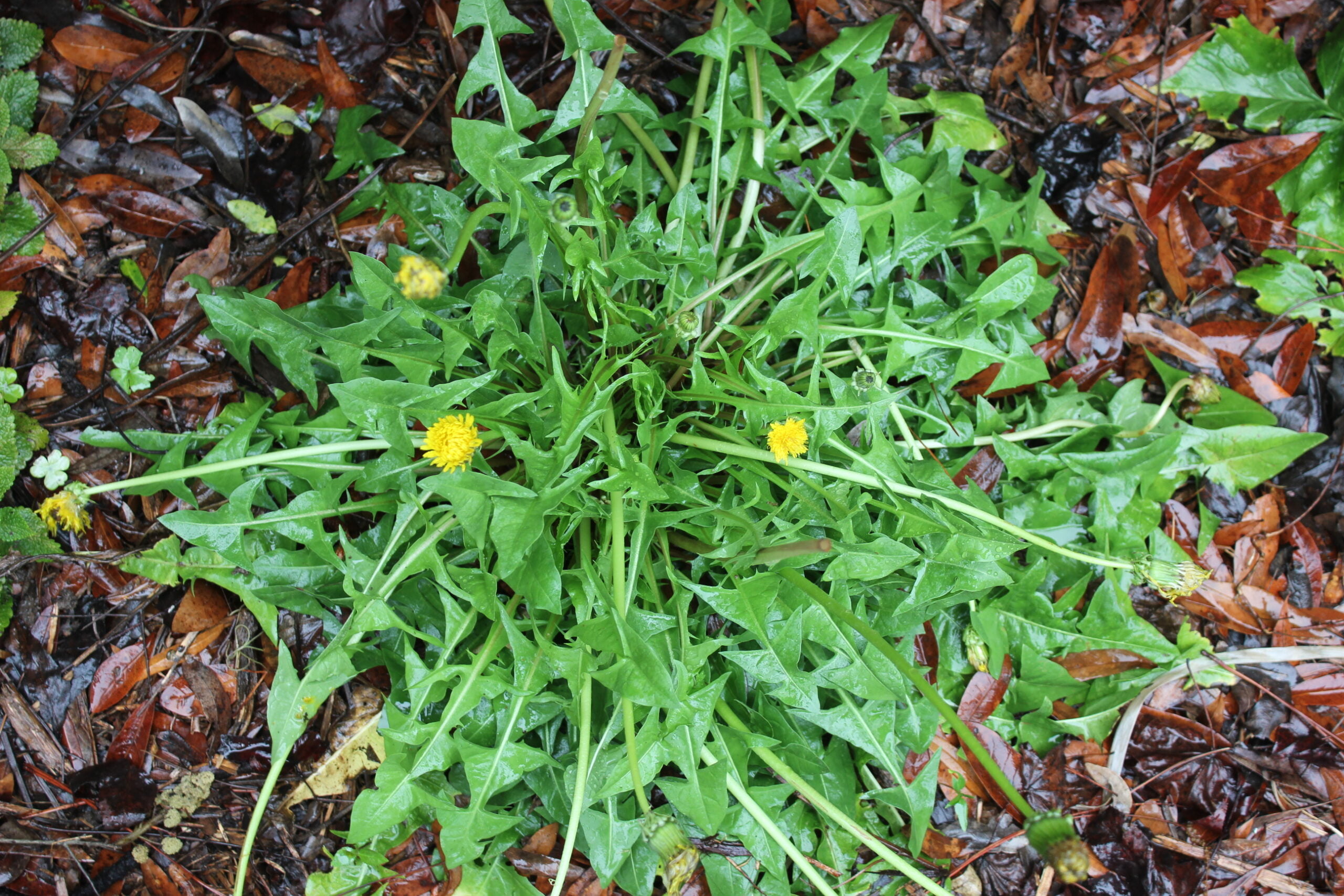
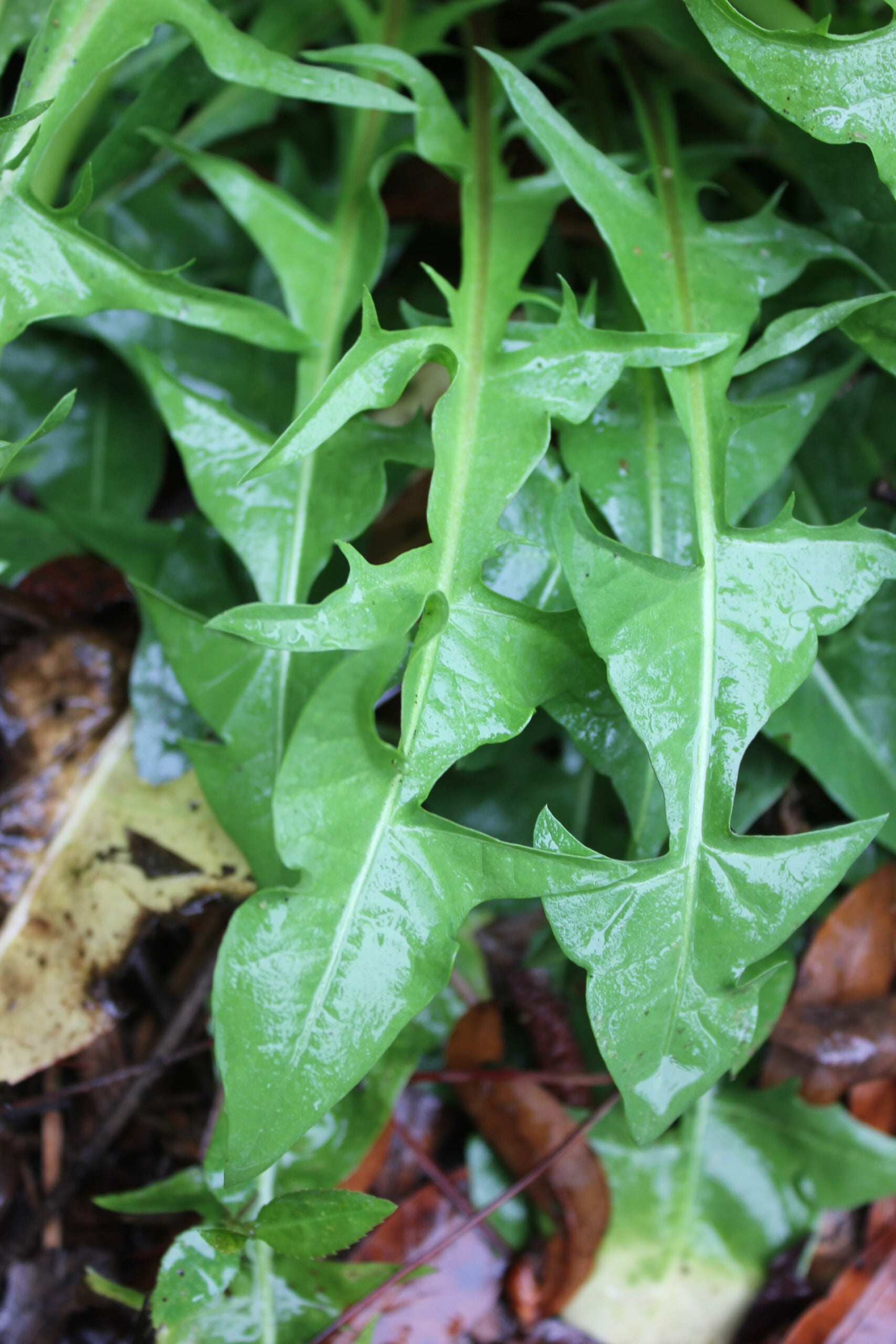
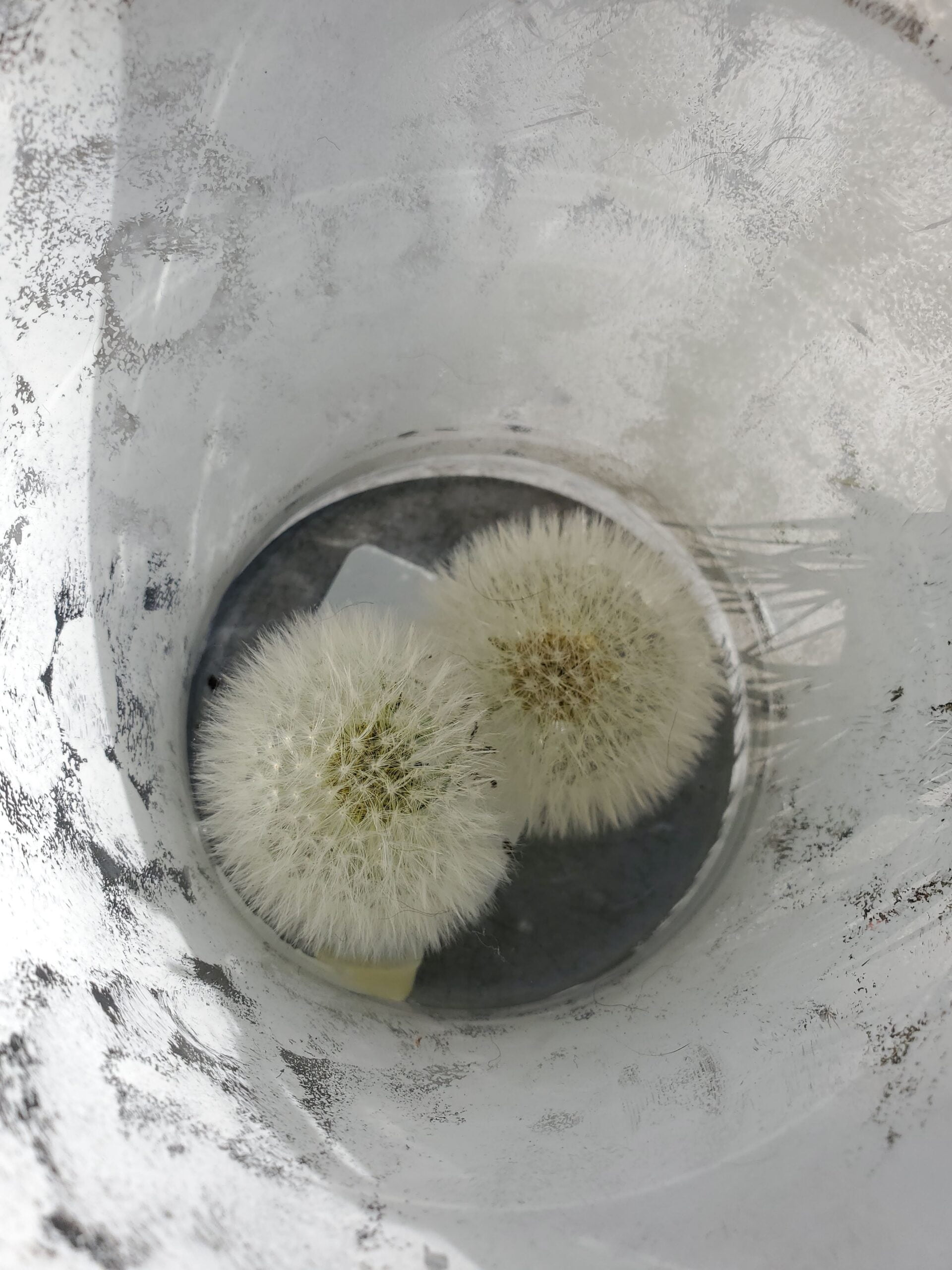
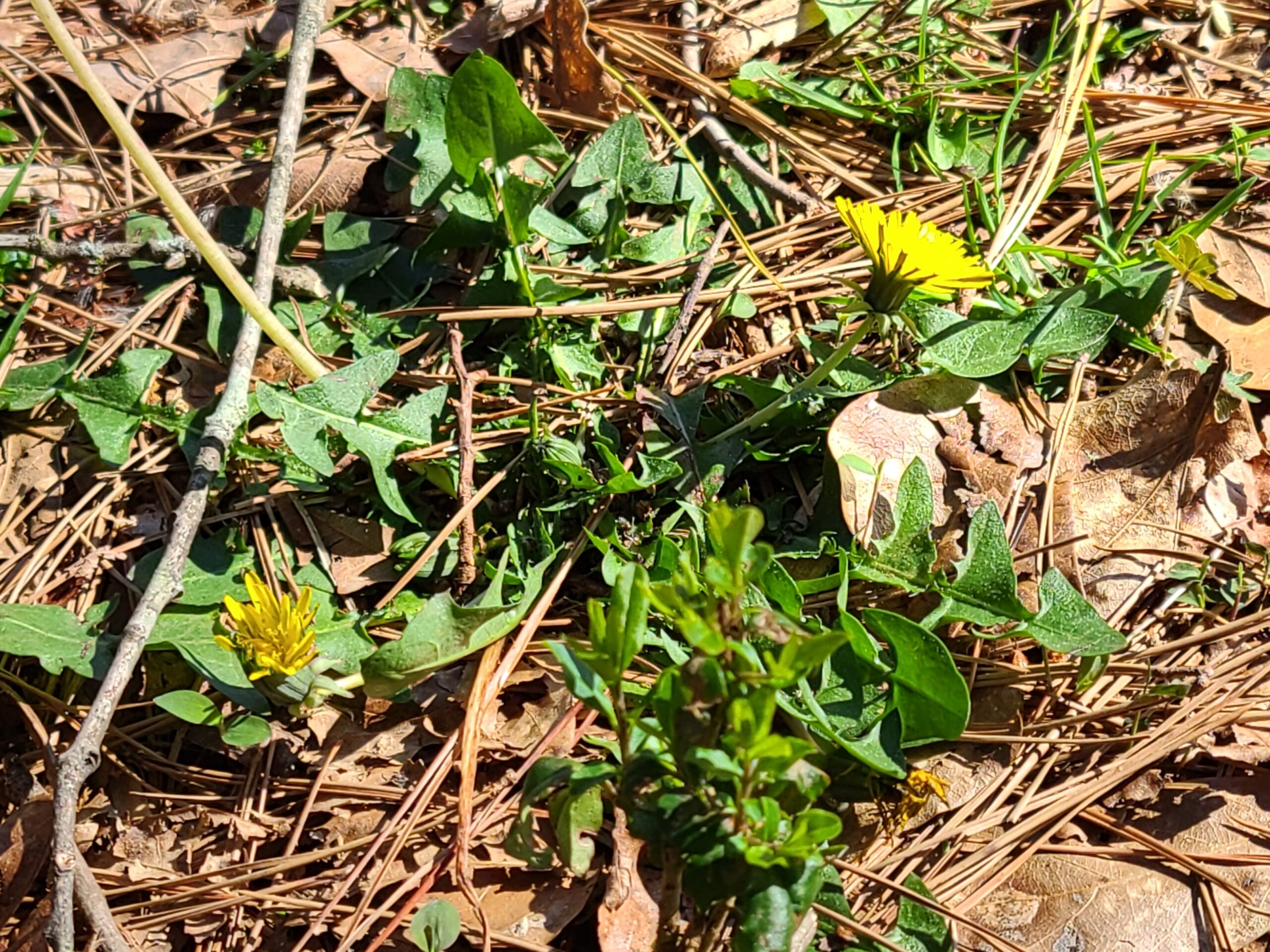
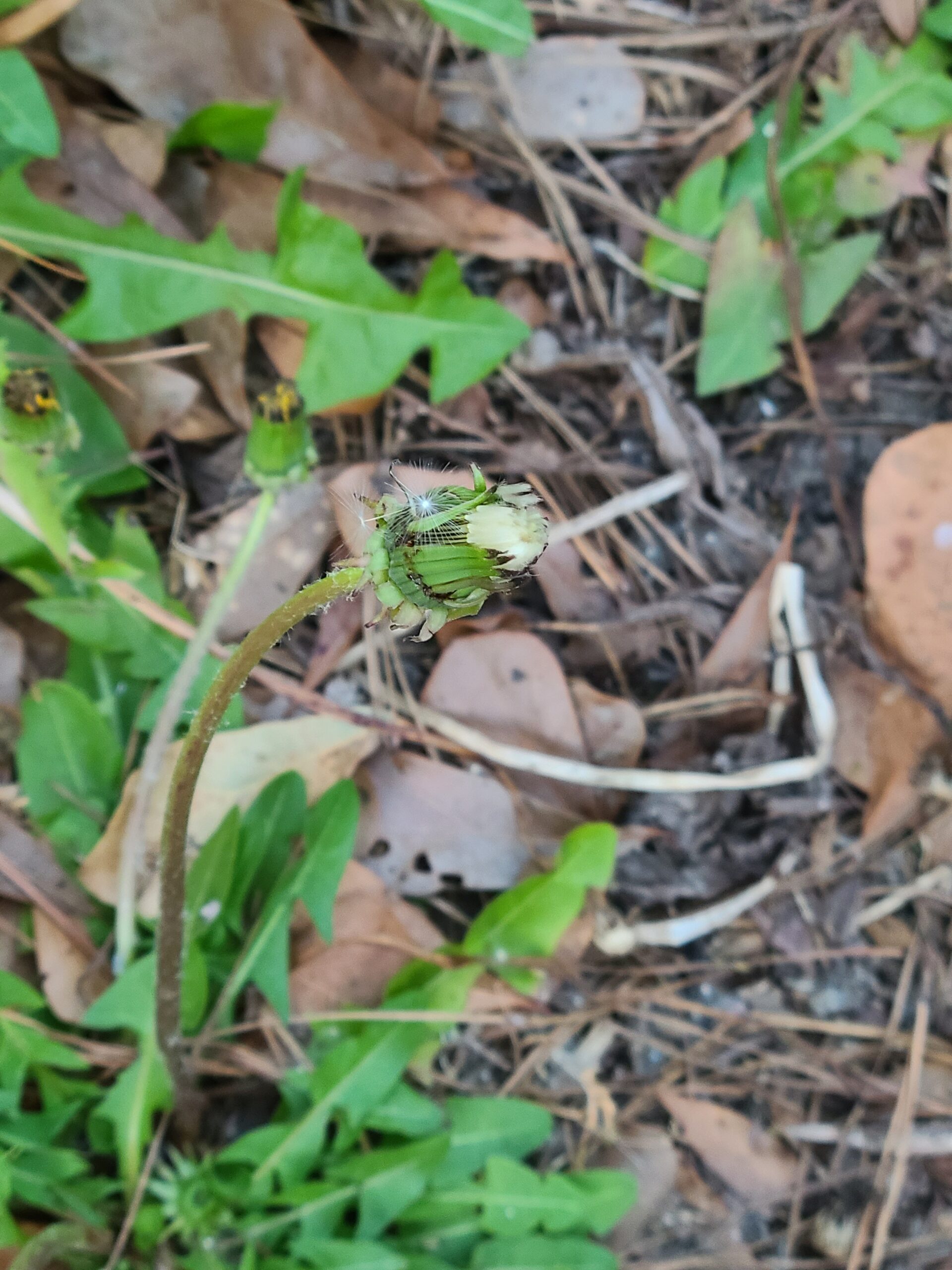
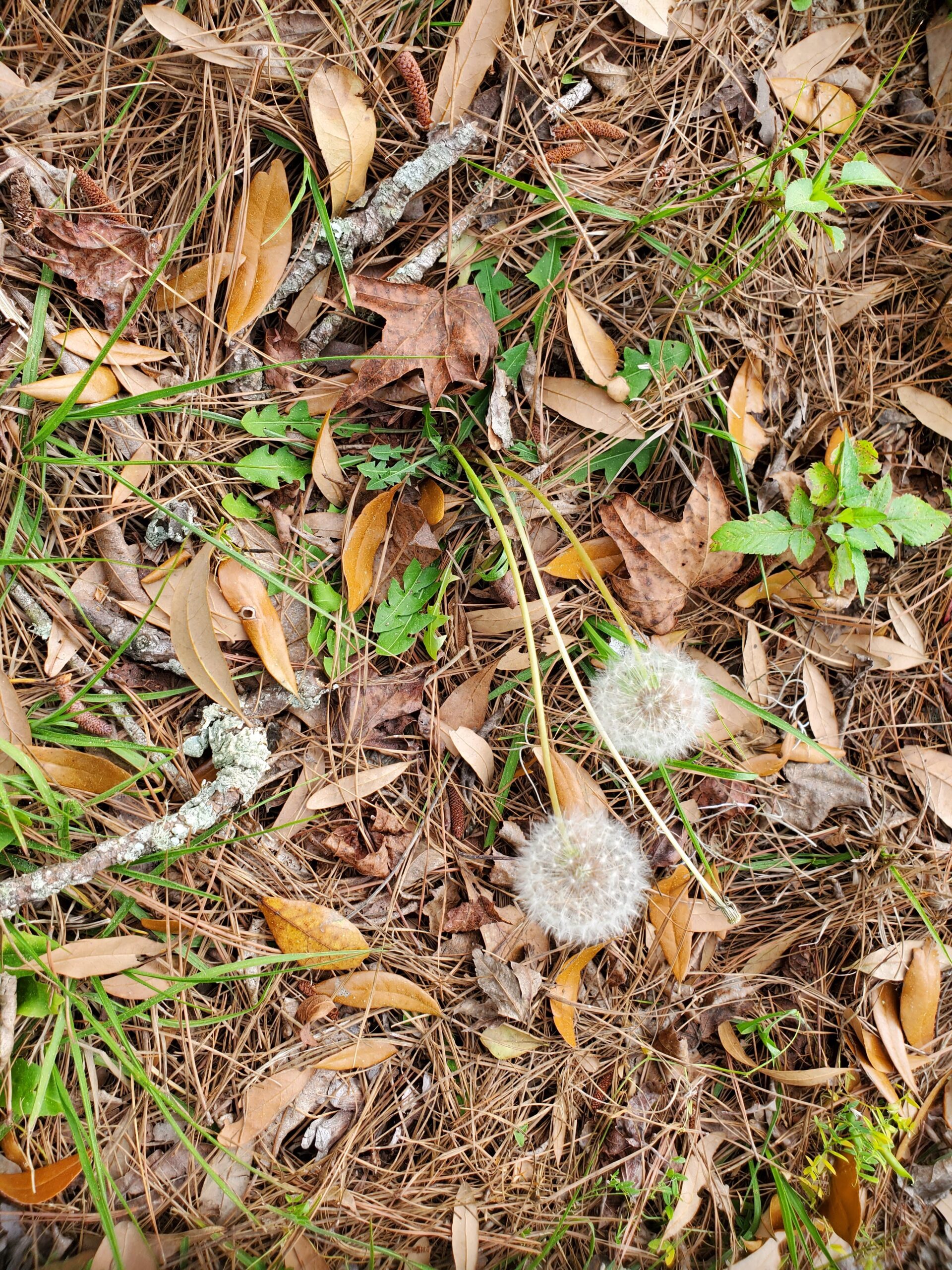
Dandelion leaves form a circular rosette close to the ground. Leaves have a few hairs on the upper and lower surfaces and widely-spaced irregular teeth that point toward the center. Typically, the leaves get larger toward the outer end.
The flowers are bright yellow, growing one on the end of each straight, leafless hollow stem. When the flowers go to seed they become the commonly identified white puffballs most of us know.
The leaves, stem, and root of the mature plant all have a milky white sap when cut open or broken.4
In North Florida, the plant grows from early Winter through early Spring, flowering at the beginning and end of this time. It goes dormant during the hot Summer.
Growing/Foraging
Dandelions don’t like the Florida Summer heat so are only found in the wild sporadically in the Winter or in shadier areas in early spring.5 However, if intentionally cultivated and placed appropriately in the garden here in North Florida, they can do well. We have dandelions growing in Weeds and Deeds gardens – in partial shade, they survive the Summer. In Spring, Fall, and Winter, they bloom and produce seed heads that can be collected to start indoors.
Dandelions are found commonly in open fields and on the edges of wooded areas. They struggle in the hot summers here but pop up in the late Fall and early Spring. There are also a number of look-alikes that are in the same family but don’t have the same medical properties as dandelions. One of the best ways to tell if you’re looking at a dandelion is the stem. Dandelion stems do not branch, each stem comes directly from the plant base in the center of the leaves and extends up to a single flower.
Sustainability
Dandelion is a common and resilient plant often considered a weed. There’s no concern about overharvesting.
Medicinal and Food Properties
Every part of the dandelion is medicinal. The plant is best known as a nutritive herb packed with vitamins and minerals, a detoxifying herb, and a digestive aid.
Dandelions’ long taproots pull up minerals from deep within the soil. The leaves contain calcium, magnesium, potassium, vitamin C, and a variety of other trace minerals that are beneficial to human and plant health.67 The leaves are a nutritious addition to a salad or other dishes calling for bitter greens or can be made into a tea. Though, a long infusion is needed to really get the minerals.
Dandelion leaves and roots are diuretic, releasing and draining fluids from the body. The fluids leave the body through urination which can deplete your potassium level. Dandelion leaf is great for this because it contains more than enough potassium and other minerals to replace what is lost. Dandelion is generally safe and gentle enough that it’s commonly given to children.8
Dandelion is a gentle but effective cleansing herb, related to its ability to help the body drain excess fluid, a condition known as edema. The leaves are supportive of the kidneys and the roots are supportive of the liver. The roots are a liver stimulant, increasing bile flow and hepatocyte activity. What that means is the herb helps your liver work better to clear toxins that cause a variety of issues. Improving liver function can improve all kinds of things like acne, rashes, digestive issues, even hormonal imbalances.9
Dandelion is an amazing digestive tonic and stimulant. Its bitter and bitter flavors help our bodies get ready to digest food. If you commonly have digestion issues, such as an upset stomach after eating, your food isn’t fully digested or constipation, dandelion can help. Eating a salad including bitter leafy greens like dandelion before a meal can prime your body and improve digestion.10
The root contains inulin, a probiotic and dietary fiber, that feeds the beneficial microorganisms in our gut, improving long-term digestion, mood, immune system resilience, and many other aspects of our health. Inulin is also shown to regulate blood sugar levels meaning dandelion root is a great addition to antidiabetic herb blends.11
The fresh tender root can be cut up and used like a carrot in dishes. It can also be pickled using whatever pickling recipe you like. Dried and roasted the root is often paired with chicory as a caffeine-free coffee alternative.12
Dandelion flowers are also edible and are a mild exhilarant. Eaten whole or taken as a tincture or essence, the flowers can have an uplifting effect that can help improve mood or relieve stress.13 Traditionally, the flowers have been used to flavor wine, mead, and vinegar.
A less known but no less powerful use for dandelion is as pain relief and anti-cancer herb. Following up on traditional uses of the herbs studies have shown dandelion tincture has “antiangiogenic, acute anti-inflammatory and anti-nociceptive activities.”14 Inflammation is localized pain, redness, and swelling in reaction to tissue irritation, injury, or infection. Antiangiogenic substances interfere in the creation of fine blood vessels needed for cancer to spread. The hollow stem of the plant can be split open fresh and the moist inner side applied to the skin to soothe burns and stings, though this may stain the skin.15
Native American and African American healing traditions have long known about dandelion’s benefits for the liver and kidney and its ability to expel excess fluids.16 As an early Spring plant, it has been traditionally enjoyed by indigenous people and mountain folk marking the turning of the season and the end of Winter.17 Dandelion has long been known as a Spring tonic – one of the first greens available in the early Spring that will “get you moving” after a Winter of reduced activity and a limited diet.18
Many indigenous groups in what is now so-called North America used dandelions for food and medicine. The Algonquin, Cherokee, Iroquois, Mesquakie, Mohegan, and others used an infusion of the leaves or roots as a cleaning “blood medicine” and a general restorative tonic. It is also commonly used as an analgesic, or pain reliever, for the stomach and mouth as well as a menstrual aid to help relieve cramps. 19
There is also a variety of sources for all parts of the plant being used as food. More mature leaves are used as pot herbs, younger leaves as salad greens, and the mildly spicy flowers as seasoning. The Shinnecock and Iriquois made wine from Dandelion. 20
The Iroquois used the plant to ward off evil magic or witchcraft.21
Safety
Dandelion is regarded as a safe plant for adults and children. Consult with a doctor or midwife before taking dandelion if you are pregnant.
Dandelion can increase stomach acidity which can irritate ulcers and cause heartburn or upset stomach. It is a mild laxative and can cause diarrhea. Some people may have an allergic reaction to Dandelion.22
Dandelion can interfere with some pharmaceuticals including potassium supplements, anticoagulants, and antibiotics. Do not take Dandelion while taking any of these types of medications without doing thorough research or consulting with a medical professional first.23
Recipes
- Dandelion Jelly Dandelion jelly tastes a bit like honey. It is true! My youngest took a taste and proclaimed the honey good.
- Dandelion Wine Recipe (& the Mistake You Don’t Want to Make) Wine out of dandelions? You bet! Making homemade dandelion wine is a longstanding family tradition.
- How to Make Dandelion-Infused Honey Regular Food in Jars contributor Alex Jones is dropping in today with an inspired yet simple idea – honey infused with bright dandelion blossoms!
Other Recipes
Sources

